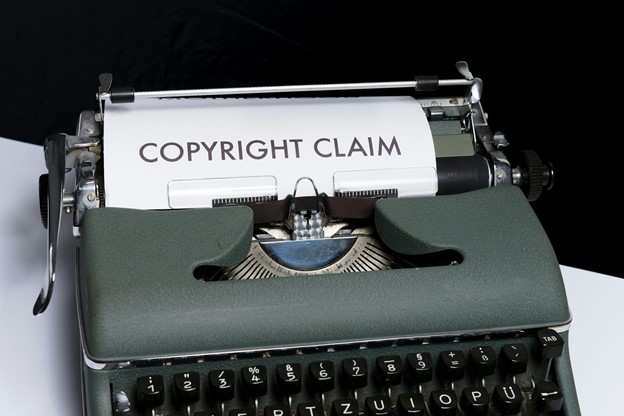Where and How Plagiarism Is Most Often Manifested

Plagiarism manifests in many areas today, but it is most commonly observed in the following sectors: academic environment, online content creation (blogs, YouTube, websites), social media, publishing industry, music industry, software development, tech, and AI-generated content. This article explores how plagiarism appears in these sectors and provides insights on the types, examples, and ways to avoid it.
The Most Common Plagiarism Examples
Plagiarism can take many forms, from copying a sentence verbatim to paraphrasing someone else’s ideas without giving credit. While the consequences may vary across different industries, the act of using someone else’s work without citation is universally regarded as unethical. That is why using a similarity checker is essential because it helps to catch plagiarism. Now, let’s break down some most common plagiarism mistakes.
-
Copying the text directly
The simplest form of plagiarism is the act of copying and pasting someone else’s text directly into your work. This is especially prevalent in academic writing, where students might use online sources to bulk up their papers. While it may seem easy to avoid detection, many institutions have an advanced online plagiarism checker, making this type of plagiarism more difficult to get away with.
-
Paraphrasing without citation
Paraphrasing involves rewording someone else’s ideas, but when the original source isn’t credited, it’s still considered plagiarism. In academic environments, this can happen when a student reads a research article and rephrases its content without acknowledging the author. It might look original on the surface, but it’s not.
-
Using media without permission
In online creation, such as YouTube videos or blog posts, it’s common to see creators use images, videos, or music that they don’t own. Whether it’s a stock photo, a clip from a copyrighted video, or background music, using these without proper permission or credit constitutes plagiarism.
-
Plagiarism of ideas
Sometimes plagiarism goes beyond words or images; it involves stealing someone else’s ideas and presenting them as your own. It can occur in tech startups, scientific research, or even in the music industry. When an original idea or concept is copied and rebranded by someone else, that’s a form of intellectual theft.
Is Plagiarism in Academic Writing a Regular Occurrence?
The academic environment is one of the places where plagiarism is most scrutinized, and it comes with serious consequences. Whether in high school, college, or graduate school, students are expected to produce original work, and any form of plagiarism can lead to severe penalties, including expulsion. However, it doesn’t prevent some students from plagiarizing someone’s work, regardless of the consequences.
What Are the Types of Plagiarism?
Understanding the different types of plagiarism is vital to recognizing and preventing it. While some types are more obvious, others are more subtle and harder to detect. Here are the most common types:
-
Direct plagiarism
This is the most straightforward type, which involves copying someone else’s work word-for-word. For example, a student might lift paragraphs from a textbook and paste them into their own paper without citation. It is unethical and will lead to severe academic penalties.
-
Self-plagiarism
Self-plagiarism occurs when someone reuses their previous work, often in an academic context. For instance, submitting the same paper for different courses without permission or acknowledgement can be considered self-plagiarism. Even though it’s your own work, presenting it as new and original is dishonest.
-
Mosaic plagiarism
This type involves taking phrases or pieces of text from multiple sources and stitching them together to create a new work. It may seem like a way to make content appear original, but it’s still paraphrasing the ideas and words of others.
-
Accidental plagiarism
Accidental plagiarism happens when someone unintentionally uses someone else’s ideas or phrases without proper attribution. This can happen when a person forgets to cite a source, misquotes a reference, or does not realize they are paraphrasing too closely to the original text.
-
Global plagiarism
This type involves stealing an entire work, whether it’s an essay, research paper, article, or even a project. This type of plagiarism is especially prevalent in the academic world, where students may purchase pre-written papers and submit them as their own.
The Most Accurate Plagiarism Detection Tools
One of the main ways to prevent plagiarism is to use the best plagiarism checker you can find. These tools are designed to analyze a document and compare it against a database of other content to check for similarities. Here are the most widely used tools these days:
- Turnitin. Commonly used in academic institutions, Turnitin scans papers for similarities across its vast database of academic papers, publications, and websites.
- Copyscape. A popular choice for content creators, Copyscape checks online content for duplicate material.
- Grammarly Premium. Grammarly offers a plagiarism checking feature as part of its premium service, which scans a piece of writing for any copied content.
What Are the Plagiarism Consequences?
Plagiarism doesn’t just affect the plagiarist; it has consequences for the entire community, whether in education, business, or creative industries. The impact of plagiarism varies depending on the severity and context, but there are some common consequences. In academia, students may face failing grades, suspension, or even expulsion. In the world of online content creation and publishing, plagiarism can destroy reputations. If a content creator is caught plagiarizing, they might lose followers, sponsorships, and credibility in the industry. Plagiarism can also lead to legal action. Copyright infringement can result in fines and lawsuits.
How to Avoid Plagiarism
-
Cite your sources
The most efficient way to avoid plagiarism is to cite your sources correctly. Whether it’s a quote, an idea, or a data point, giving credit to the original author is crucial.
-
Understand and paraphrase
When incorporating someone else’s ideas, make sure that you fully understand the material. Paraphrase it in your own words and structure, and always credit the source. If you’re unsure, it’s always safer to quote directly.
-
Use plagiarism detection tools
Using plagiarism checkers can save you from the risk of unintentionally copying someone else’s work. They can give you a clearer picture of whether your content is too similar to another source.
Final Thoughts
Plagiarism is a serious issue. When we understand its manifestations and consequences, it’s easier to take steps to make sure that the work remains original and respectful of others’ intellectual property. Whether in academics, online content creation, or the tech world, maintaining integrity and proper attribution is key to a fair and ethical work environment.

